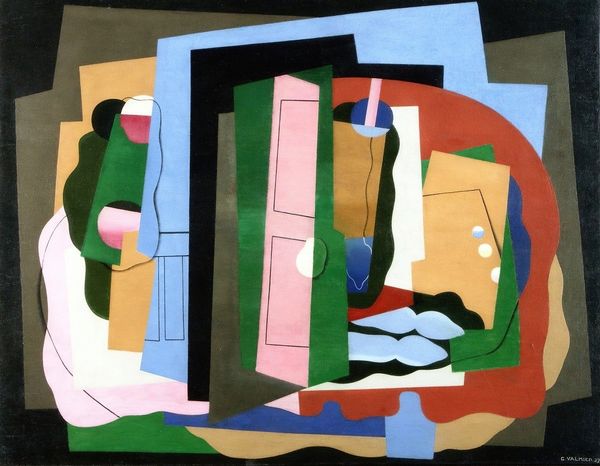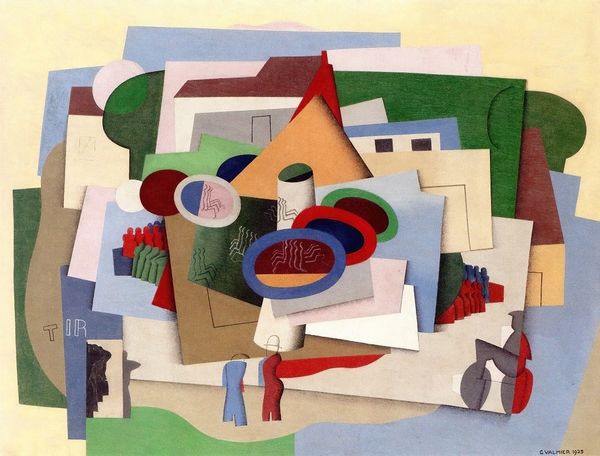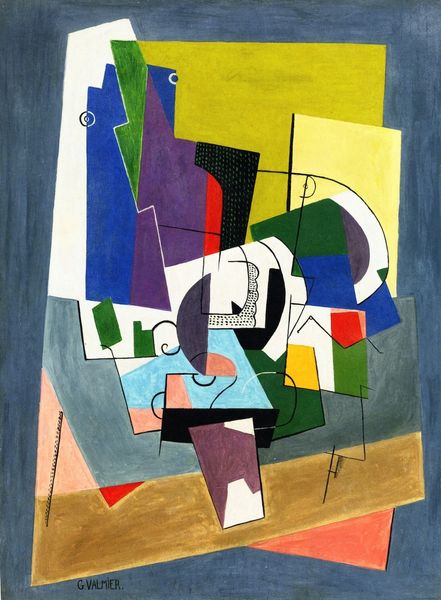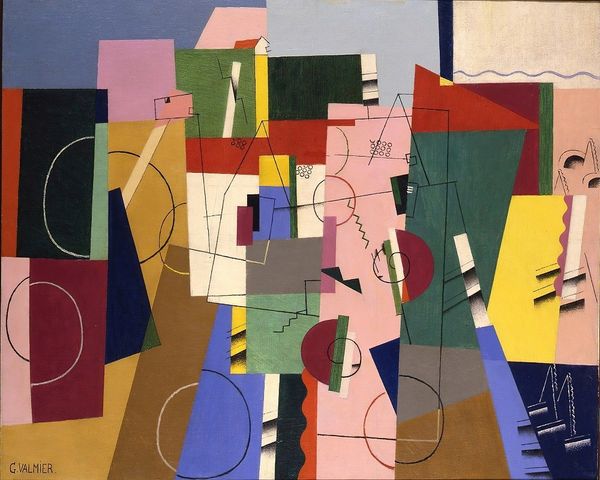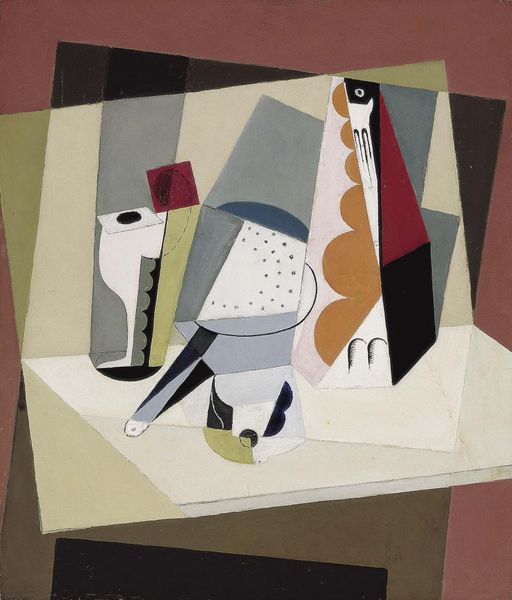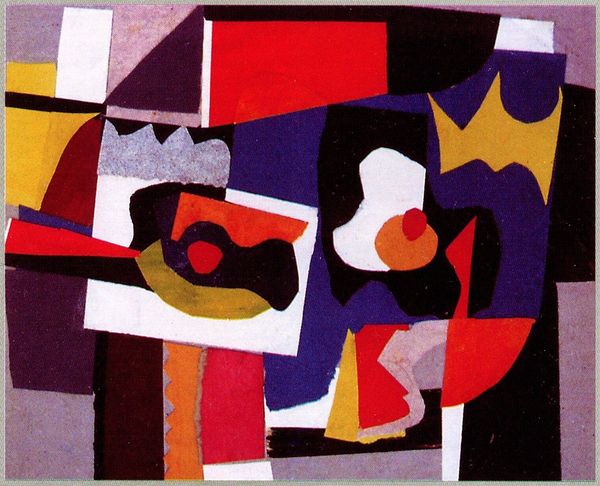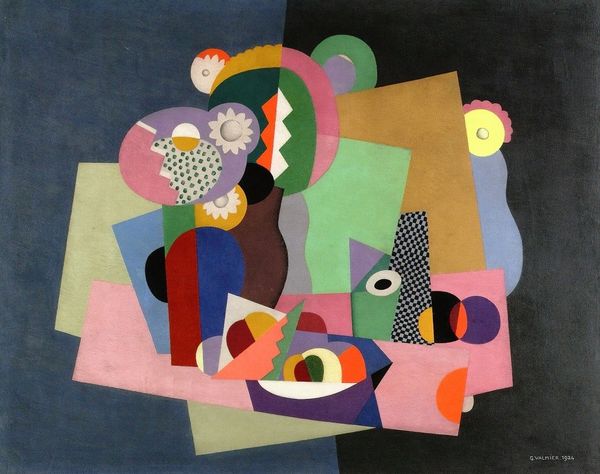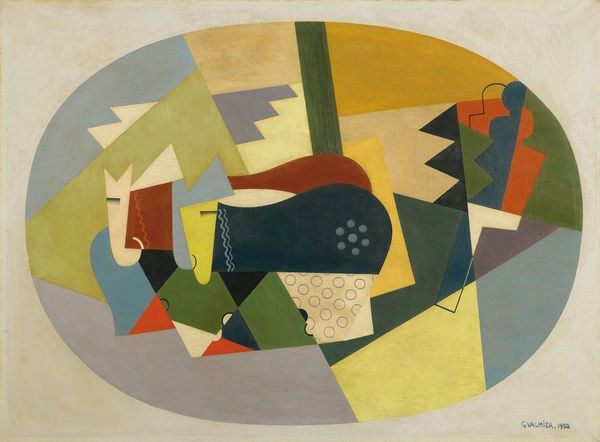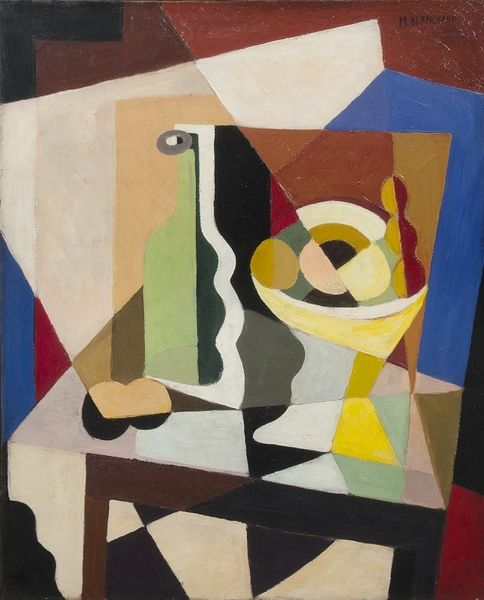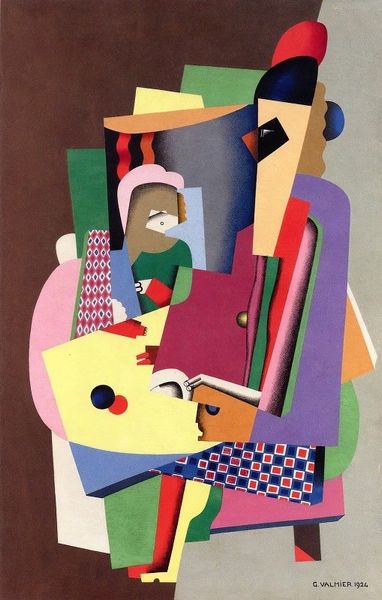
painting, acrylic-paint
#
art-deco
#
cubism
#
green and blue tone
#
painting
#
acrylic-paint
#
abstract
#
geometric
#
abstraction
Copyright: Public Domain: Artvee
Editor: This is Georges Valmier’s "Still life with bottle," painted in 1923. It’s such an interesting composition using, what looks like, acrylic paint. The color palette and geometric shapes are so bold. What do you see in this piece? Curator: Beyond its striking aesthetic, "Still life with bottle" provides insight into the interwar period's art world, a space of immense creative energy shaped by significant social and political shifts. We see how artists like Valmier, working within Cubist and Art Deco frameworks, sought to redefine artistic representation after the upheaval of World War I. The playful colors and fragmented forms can be read as a deliberate break from traditional academic styles, reflecting a desire to engage with modernity and the evolving role of art within society. How might the exhibition context—its display in a gallery versus a domestic setting—alter our understanding of this "Still life?" Editor: That's a fascinating point! Displaying it in a gallery gives it a sense of importance. It elevates everyday objects to something worthy of analysis and reflection, compared to a home setting where it might just be a pleasing, decorative element. Curator: Precisely! Galleries and museums not only frame art but also construct narratives and confer value. Consider how the emerging art market and critical discourse surrounding Cubism and abstraction at the time might have influenced Valmier's artistic choices, or the audience’s perception? Editor: It seems like the intention was to create something that was more than just visually appealing; it’s a reflection of the shifting cultural landscape. I never thought about how much context affects the art itself! Curator: Exactly! Recognizing this interplay broadens our appreciation for the artwork and highlights the complex web of forces at play in its creation and reception. This contextual awareness will only continue to help you. Editor: That makes perfect sense. It encourages a deeper consideration of the artwork. Curator: Indeed. Now, do you feel prepared to critically engage with these dynamics? Editor: Absolutely! It’s changed my view entirely. Thank you.
Comments
No comments
Be the first to comment and join the conversation on the ultimate creative platform.
